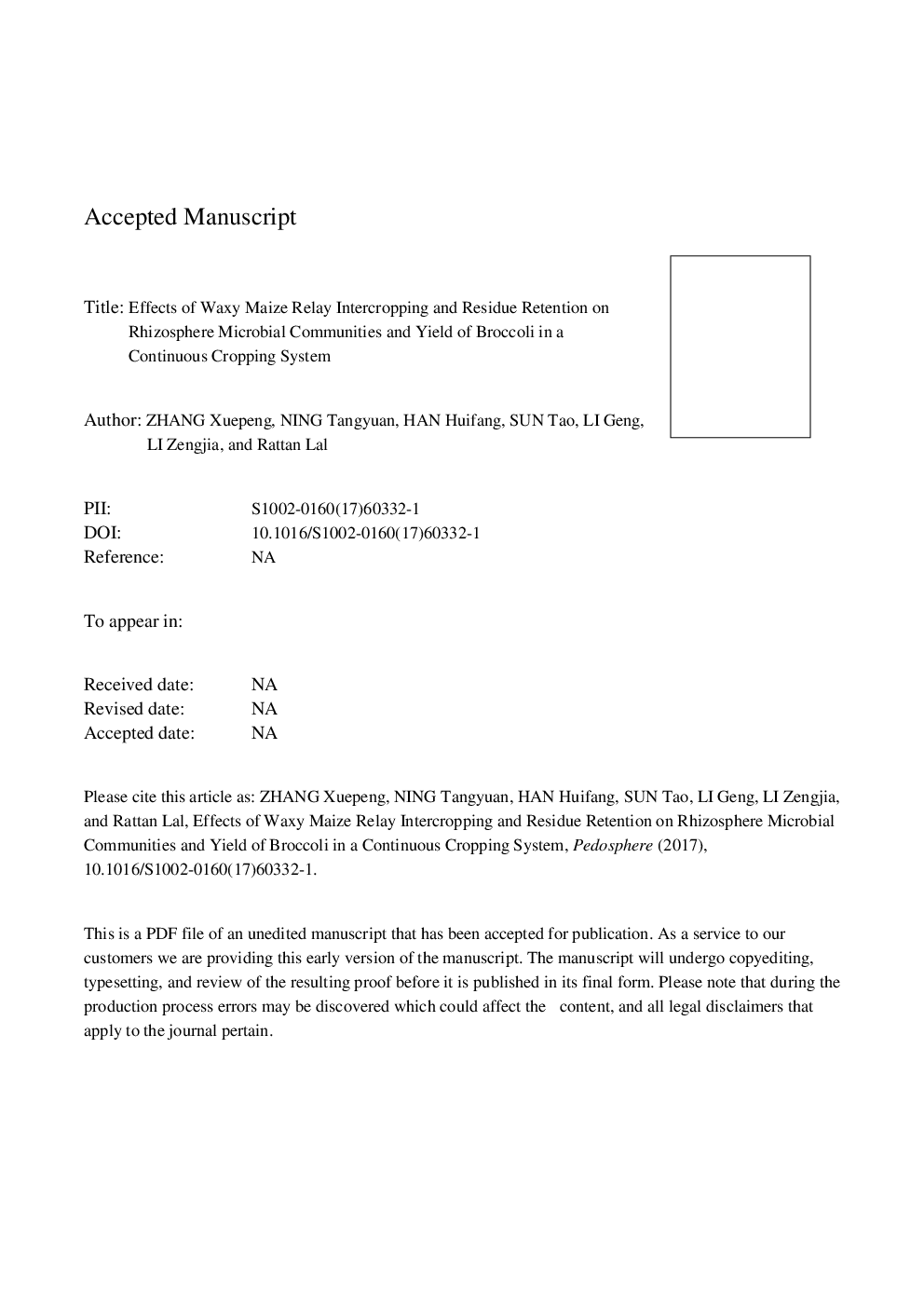| کد مقاله | کد نشریه | سال انتشار | مقاله انگلیسی | نسخه تمام متن |
|---|---|---|---|---|
| 8895403 | 1630322 | 2018 | 25 صفحه PDF | دانلود رایگان |
عنوان انگلیسی مقاله ISI
Effects of Waxy Maize Relay Intercropping and Residue Retention on Rhizosphere Microbial Communities and Vegetable Yield in a Continuous Cropping System
ترجمه فارسی عنوان
اثر مخلوطی از مخلوط رشته واکسیناسیون و حفظ ضایعات در جوامع میکروبی ریزوسفر و عملکرد سبزیجات در یک سیستم کشت
دانلود مقاله + سفارش ترجمه
دانلود مقاله ISI انگلیسی
رایگان برای ایرانیان
کلمات کلیدی
توسعه رنگ متوسط به خوبی، استفاده از منبع کربن، موانع برداشت مداوم، تنوع جامعه میکروبی، تک کشتار،
موضوعات مرتبط
علوم زیستی و بیوفناوری
علوم کشاورزی و بیولوژیک
دانش خاک شناسی
چکیده انگلیسی
Intercropping and residue retention contribute to high yield and quality of crops. However, their coupled effects on rhizospheric microbial communities under a continuous vegetable cropping system have not been adequately addressed. The objective of the present study was to assess the effects on soil microbial community and yields of waxy maize (Zea mays L.) intercropped with or without residue retention in a continuous broccoli (Brassica oleracea L.) cropping system, i.e., relay intercropping of broccoli and waxy maize (B/M-B), relay intercropping of broccoli and waxy maize with residue retention (B/MR-B), and broccoli monoculture (B-B). The biomass yields of spring and autumn vegetables in B/MR-B were 16.3%-32.5% and 30.1%-46.1% higher than those of B-B, respectively. Autumn vegetable economic yields of B/MR-B were 28.2%-40.3% higher than B-B. The average well color development followed the order: B/MR-B > B/M-B > B-B. The Shannon index, Simpson index, and McIntosh index were higher in B/MR-B than under monoculture. A principal component analysis showed that microbial communities of B/MR-B soils differed from those of B/M-B and B-B soils. Carbon (C) sources utilized by the rhizosphere microorganisms were mainly carbohydrates, carboxylic acids, amino acids, and polymers; however, the C sources for the soil microbial community differed between intercropping and monoculture. The communities from B/MR-B preferred amino acids and polymers. Available nitrogen (N), potassium (K), and phosphorus (P) had an obvious impact on soil microbial community. Additionally, the C source utilization by microorganisms was significantly affected by pH and available K and P. Cropping system diversification through relay intercropping and residue retention effectively improved the functional diversity of the soil microbial communities and increased the yields of vegetables.
ناشر
Database: Elsevier - ScienceDirect (ساینس دایرکت)
Journal: Pedosphere - Volume 28, Issue 1, February 2018, Pages 84-93
Journal: Pedosphere - Volume 28, Issue 1, February 2018, Pages 84-93
نویسندگان
Xuepeng ZHANG, Tangyuan NING, Huifang HAN, Tao SUN, Geng LI, Zengjia LI, Rattan LAL,
